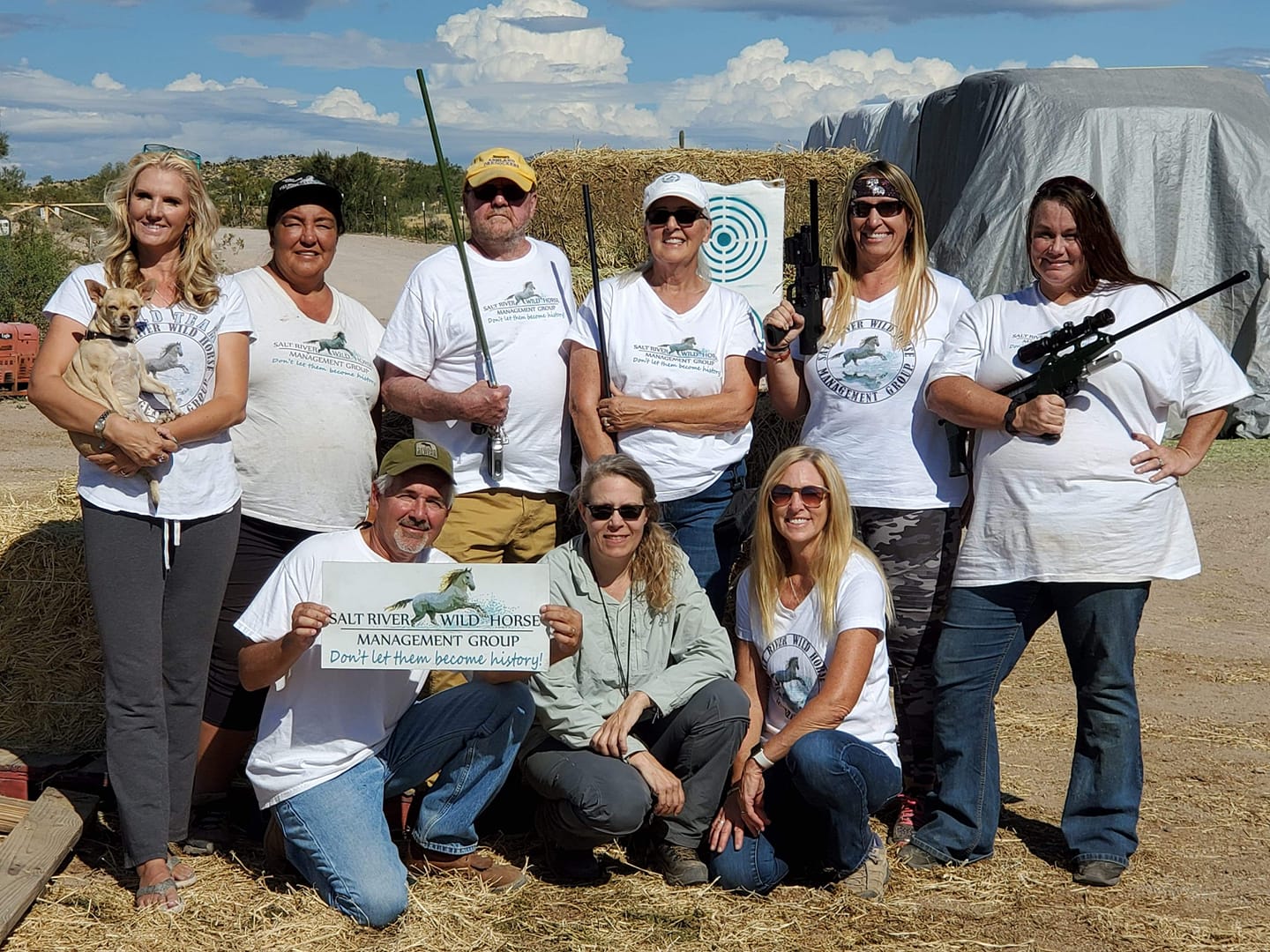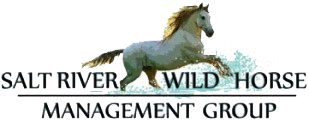
Political Update: Humane birth control program
Did you know, that the Salt River wild horses are still here, largely because of our humane birth control program?
Had we not offered this as THE SOLUTION to controlling the population, as opposed to a roundup, back in 2015, the Forest Service would not have considered making an agreement with the State to let the horses stay in the Tonto National Forest. We know this because, well, we were there with our attorneys and their attorneys, fighting the removal, and negotiating this alternate outcome instead.
The Salt River Horse Act was a result of all parties and government agencies agreeing to this outcome, as a better solution for the public. However, the Salt River Horse Act did not specify how many horses got to stay or exactly where they got to stay.
This is why recently, a series of closed door meetings of “stakeholders” was concluded, it was called the “Salt River Horse Collaborative”. We did not talk about it much on facebook, because that would jeopardize our participation in the meetings, but now they are over.
The final recommendations of this “collaborative” still have not been published, but we have opposed them and for most of it, do not agree with them.
The pressure is high from participating environmental organizations, ranching interests and a hunting organization, who made it clear that they only want 100 Salt River wild horses to remain on the lower Salt River. For the rest of the 100 horses, they had already found some packstring horse back riding outfit to adopt some of them! Seriously.
The number of 100 horses is of course way too low to be genetically viable and we just don’t think it would please the public if people had to conduct a 3 day search, in order to find a Salt River wild horse to photograph.
There was a lot of pressure in these meetings, so we even considered compromising, and maybe adopting a few of the bachelor stallions out. But then we remembered where we started, and we just didn’t think that you the public would have agreed with that. So we fought for all of them. We made it very clear, that all of the Salt River wild horses should get to stay.
The political conundrum is that there are more than 4 times that amount of Salt River wild horses currently on the Forest, which is the highest the population has ever been. So in the government’s eyes, we are asking for a lot.
We know it is a lot we ask, but we also know that we do a lot in return:
- We make sure that no agency ever has to deal with a wild horse situation, because we handle it.
- We make sure that Salt River wild horses stay in a healthy body score, even during drought, so that the public gets to see healthy wild horses.
- We make sure that Salt River wild horses do not have to suffer fatal injuries by slow death. We either rescue or humanely euthanize these cases, depending on severity.
- We mitigate safety issues the best that we can, through our road patrol and fencing team.
- We continually clean up the Tonto National Forest.
- We pay for it all with donations from the public.
With your support, we will hold the line, the line of no removals of Salt River wild horses.
We have asked for 5 years to prove that PZP works, and ten years to accomplish a reduced population of 200 wild horses.
We were authorized to start our program in late October 2018. We have darted approximately 30 horses per month since then. The first year of the program, it takes 2 darts per mare, a primer and a booster. Since most of the mares were already pregnant at that time, and PZP does not influence the fetus, we have had a healthy and large foal crop for 2019. The first foal was born in January of 2019, and the last foal of 2019 will be born in December. (a mare we did not inoculate in time.)
In 2020, you will see a major reduction in the amount of foals born and full implementation will be accomplished by 2021.
It does not mean that we will have no foals. PZP is only 95% effective plus there will always be a few mares we cannot find. So we expect to see approximately 15 foals in 2020, and less than 10 for 2021. With our high natural death rate averaging 40 deceased horses per year, there will be a reduction by natural attrition, of 30 horses per year.
It is not bad for wild horses to have fewer babies. PZP does not influence their hormones and therefore their natural behaviors remain intact. All of the bands so far have maintained their same formations. Mares also become healthier from less stress on their bodies. We love and care about each Salt River wild horse.
We will evaluate the program each year, and set our goals accordingly. After a few years we will have published, and peer reviewed results.
Together with you the public, we will prove that wild horses can be managed humanely.
As you may know, government agencies are usually not so willing to work with non profits, which results in the removal of over ten thousands of wild horses per year, elsewhere in the USA. The wild horses then get separated from their families and are stuffed in holding pens for the rest of their lives. This costs the taxpayer 85 million dollars per year.
We hope that our work proves, that keeping wild horses where they belong, is cheaper for the government and taxpayers, more sustainable, more humane, profitable for the community, and supported by the public.
Thank you to our government agencies; the Forest Service and the AZDA, who so far have held up their end of the deal.
Thank you to all of our supporters, who have held up their end of the deal, by donating.
And thank you to our new darters who will help us stick to our end of the deal!
In the picture are our new graduate certified darters! (plus Kayla from SCC and Destini and Simone). Our previously certified darters are not in this picture, however, in total we now have 11 certified darters volunteering their time to humanely reduce the population of the Salt River wild horses, in order to ensure their freedom.
SRWHMG.
